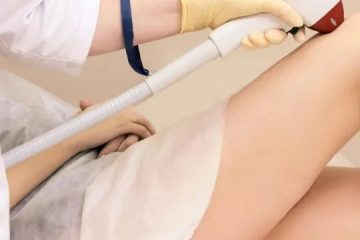Acne is one of the most common skin concerns that people of all ages face. With an overwhelming array of skincare tools and treatments available, it can be hard to determine which ones truly make a difference. Recently, the silicone scrubber has gained popularity as a gentler, more hygienic alternative to traditional washcloths and brushes. But does this trendy skincare tool actually help with acne? Let’s explore the science, benefits, and best practices behind using silicone scrubbers for clearer skin.
What Is a Silicone Scrubber?
A silicone scrubber is a skincare tool made from flexible, food-grade silicone with soft bristles. Designed to exfoliate the skin gently, these scrubbers come in various shapes, sizes, and textures. Unlike loofahs or brushes, which can harbor bacteria and irritate the skin, silicone scrubbers are non-porous and easy to clean. Many people use them to apply cleansers and massage the skin during their daily facial routine.
There are two main types of silicone scrubbers: manual and electronic. Manual versions are small, palm-sized pads with bristles on one side. Electronic scrubbers, on the other hand, often feature vibrating or pulsating functions designed to provide deeper cleansing.
How Acne Forms and What It Needs
To understand how a silicone scrubber might help, it’s essential to know how acne develops. Acne typically forms when hair follicles become clogged with oil (sebum), dead skin cells, and bacteria. This creates an ideal environment for inflammation and breakouts.
Key contributors to acne include:
- Overproduction of oil
- Dead skin cell buildup
- Bacterial growth (especially Cutibacterium acnes)
- Hormonal changes
- Use of comedogenic skincare products
Given that clogged pores and bacterial buildup are primary culprits, exfoliating the skin and maintaining hygiene can help reduce breakouts. That’s where silicone scrubbers enter the picture.
Benefits of Using a Silicone Scrubber for Acne
1. Gentle Exfoliation
One of the most important aspects of acne care is exfoliation. Regular exfoliation removes dead skin cells that can clog pores and cause blackheads and pimples. A silicone scrubber offers a gentle, non-abrasive way to exfoliate without damaging sensitive or inflamed skin. This makes it especially suitable for people with active breakouts who want to avoid irritating their skin further.
2. Improved Cleansing
Many people use their hands to wash their face, which can be insufficient for removing sunscreen, makeup, or deep-seated oil and dirt. A silicone scrubber enhances the cleansing process by lifting impurities more effectively than hands alone. This deeper clean may help reduce the formation of new acne lesions.
3. Bacteria Resistance
Traditional washcloths and brushes often retain moisture and can become breeding grounds for bacteria. Silicone is non-porous and dries quickly, making it much less likely to harbor bacteria that could worsen acne. Using a clean tool each time you wash your face is a key way to keep acne-causing microbes at bay.
4. Stimulates Circulation
Using a silicone scrubber in circular motions helps stimulate blood circulation, which may contribute to healthier skin overall. While improved circulation won’t directly treat acne, it can promote healing and reduce inflammation over time.
Potential Drawbacks and Considerations
While silicone scrubbers offer several benefits, they are not a miracle cure for acne. Overuse or improper use can actually exacerbate skin issues.
- Over-exfoliation: Using a scrubber too frequently or applying too much pressure can irritate the skin, stripping away protective oils and worsening inflammation.
- Not suitable for cystic acne: For deep, painful cystic acne, physical exfoliation might be too harsh. In such cases, chemical exfoliants like salicylic acid or benzoyl peroxide may be more effective.
- Hygiene is still key: While silicone scrubbers are easier to clean, they still need to be rinsed thoroughly and allowed to dry completely between uses.
How to Use a Silicone Scrubber Properly
To get the most out of your silicone scrubber, follow these steps:
- Wet your face and the scrubber with lukewarm water.
- Apply a gentle, non-comedogenic cleanser to the scrubber.
- Use light, circular motions to massage your face, focusing on areas prone to congestion.
- Rinse thoroughly with water and gently pat your face dry with a clean towel.
- Clean the scrubber after each use and allow it to air dry.
Limit use to once a day or a few times a week depending on your skin’s sensitivity.
Do Dermatologists Recommend Them?
Many dermatologists support the use of silicone scrubbers, particularly for people with sensitive or acne-prone skin. They emphasize that these tools can be a good addition to a skincare routine when used gently and consistently. However, they also caution against relying solely on scrubbers to manage acne. A comprehensive skincare regimen—including proper cleansing, moisturizing, sun protection, and targeted treatments—is crucial for long-term results.
Final Verdict: Can a Silicone Scrubber Help Acne?
In summary, a silicone scrubber can be a valuable tool for individuals with mild to moderate acne. Its gentle exfoliating action, enhanced cleansing ability, and hygienic design make it a smart alternative to harsher scrubbing tools. While it won’t eliminate acne on its own, it can play a supportive role in a well-rounded skincare routine.
If you’re struggling with persistent or severe acne, consult a dermatologist before making any major changes to your routine. But if you’re looking for a simple, skin-friendly way to boost your cleansing game, a silicone scrubber might be worth a try.




